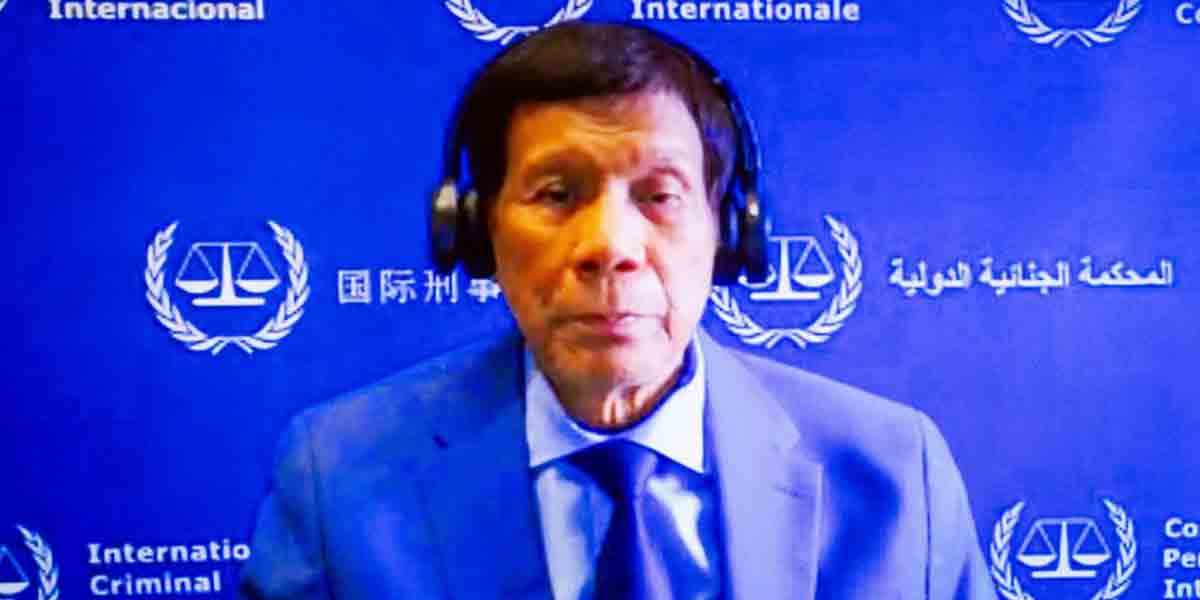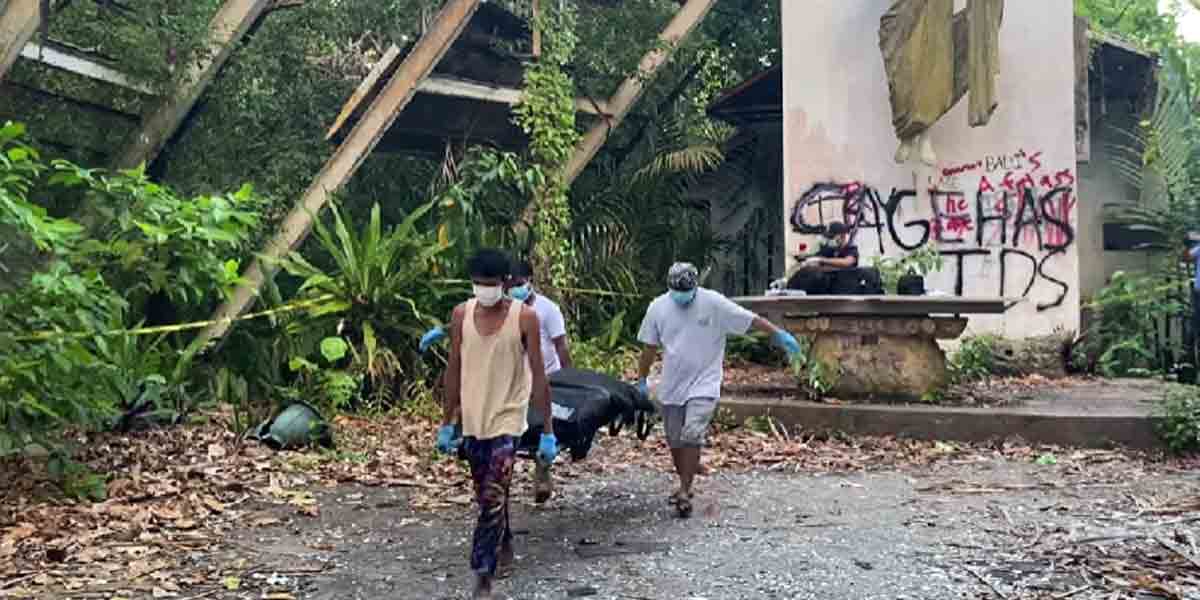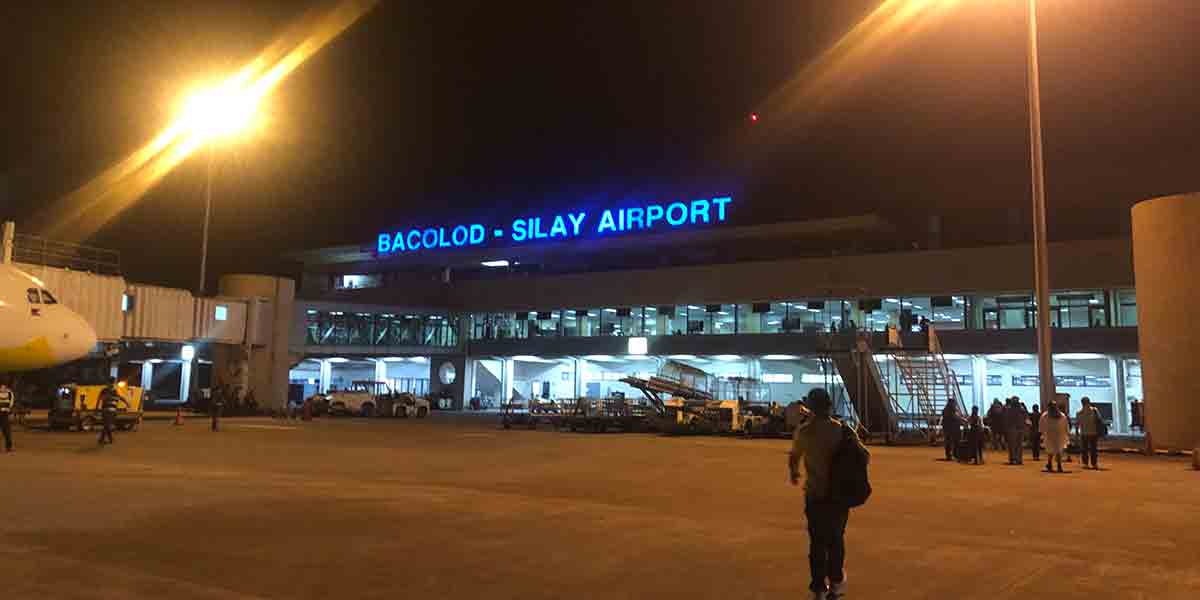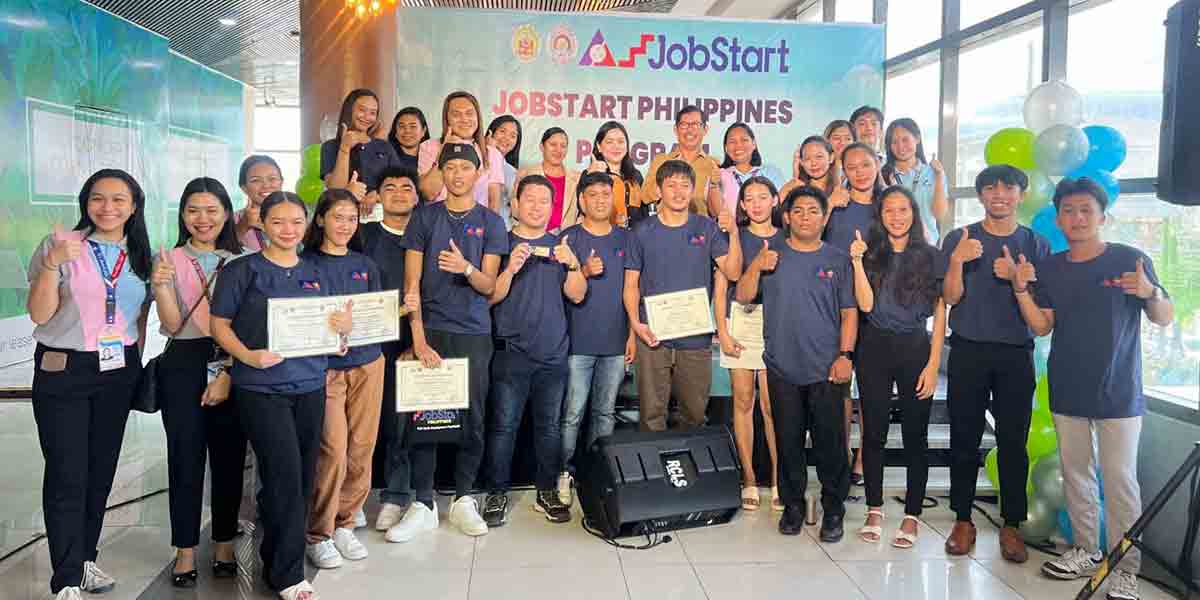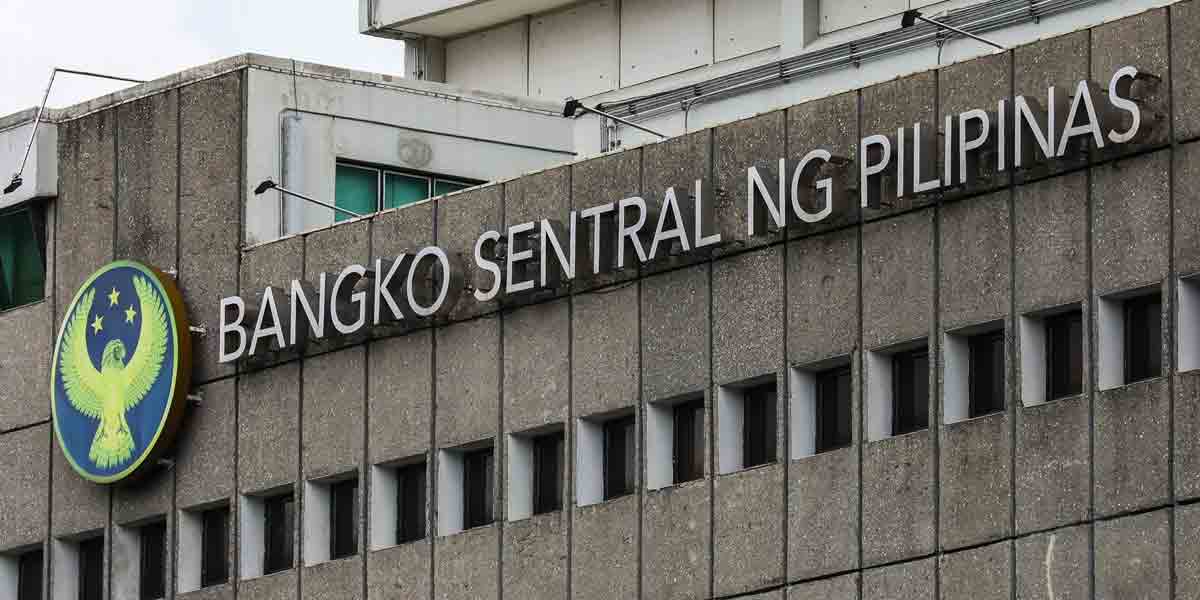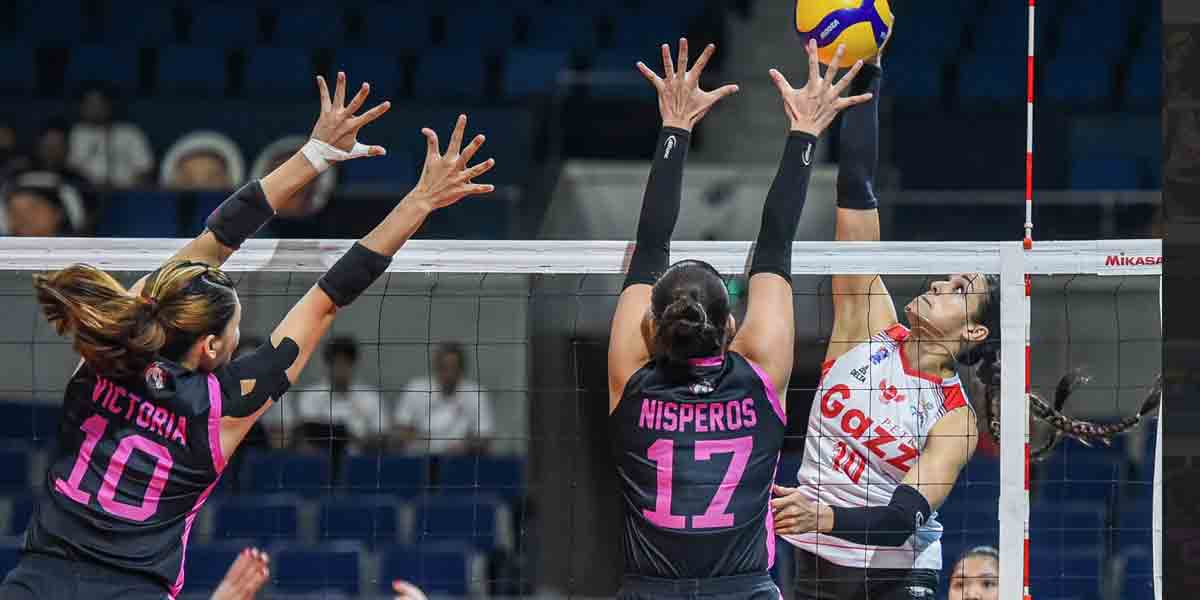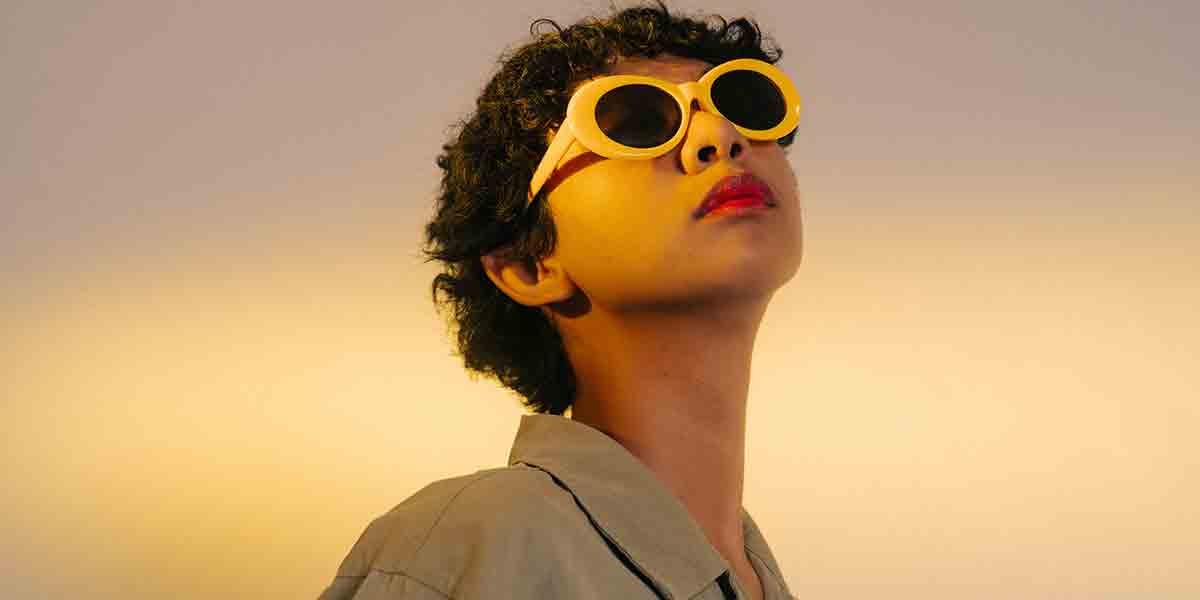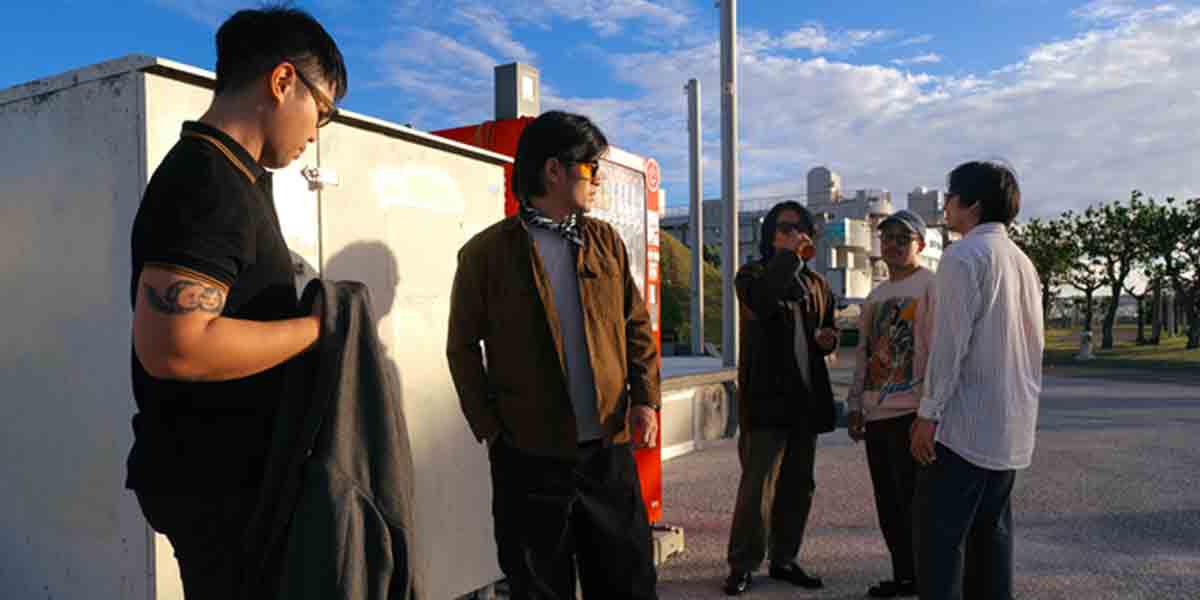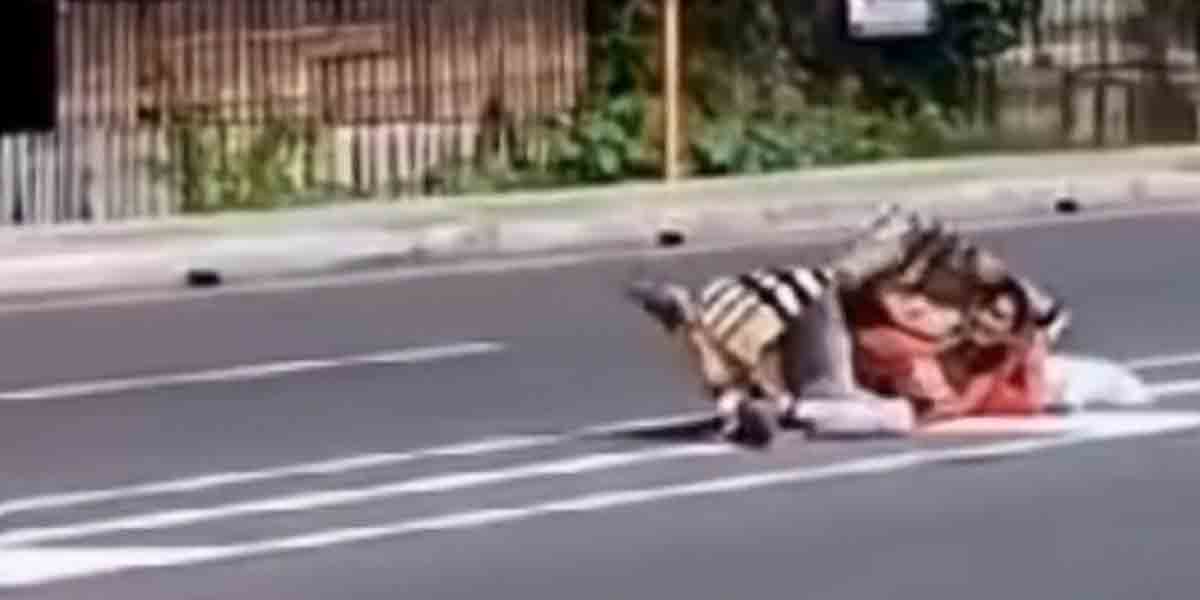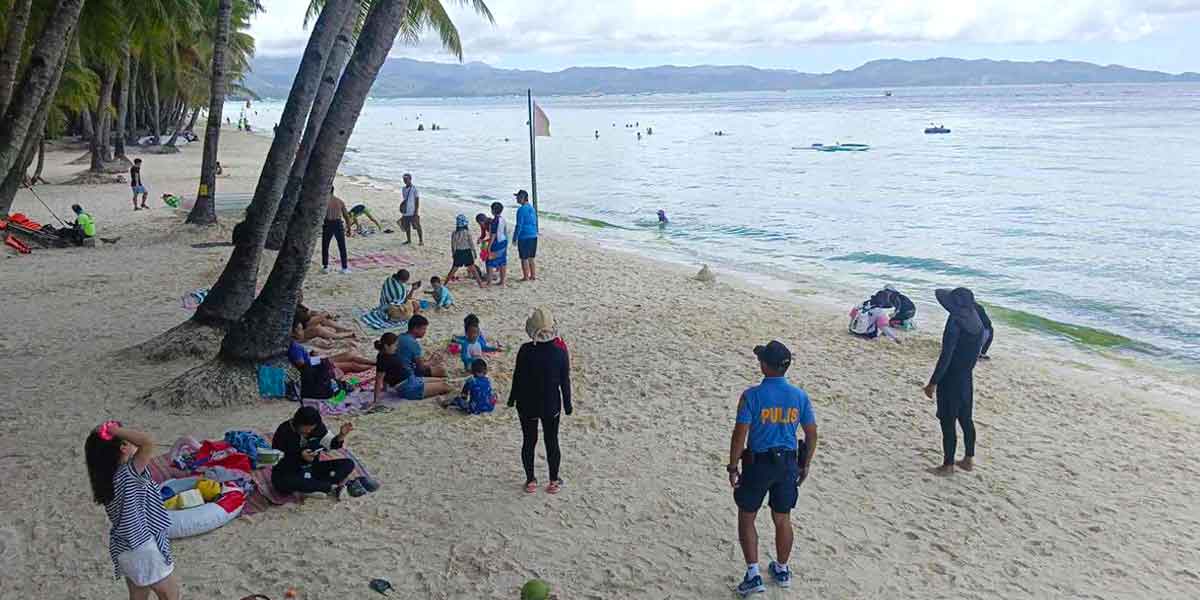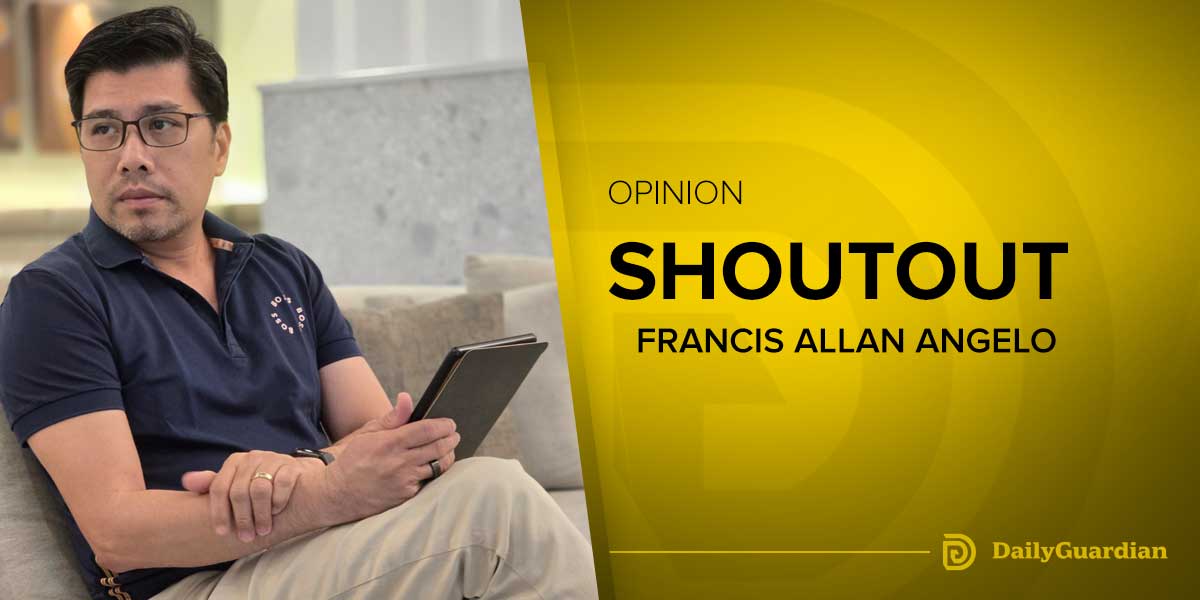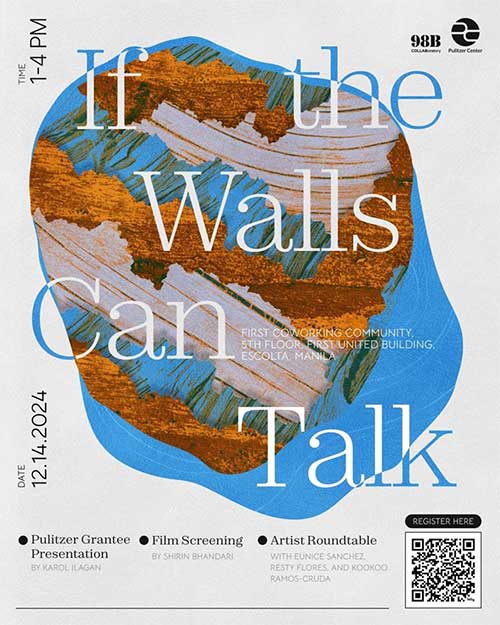
By Lk Rigor
Walls form the foundation of our homes and buildings. They are silent witnesses to the lives lived within and beyond them. These structures have evolved alongside human civilization; have offered protection, shelter, and a sense of permanence in an ever-changing world. But they also hold stories— of growth and decline, creation and destruction—that reflect the shifting landscapes they inhabit.
According to a 2021 report by Karol Ilagan from the Pulitzer Center, the Philippines was once covered by lush forests, which made up over 90% of the country’s land area before colonial rule. Over time, population growth and land use changes led to a sharp decline in forest cover. By the end of American rule, forests had already shrunk significantly, and the loss accelerated during Martial Law. Despite ongoing efforts to restore the forests, they still cover less than seven million hectares today.
The dwindling forests tell a larger story of urbanization and industrialization as cities expand and consume spaces once populated by flora and fauna. This narrative resonates strongly with the First United Building in Manila, a heritage structure in a city where the push for progress often clashes with the remnants of the past. Within and outside its walls, we are reminded of the tensions between preservation and transformation, the natural and the constructed, and the lives that intersect these realms.
In this exhibit, artists Eunice Sanchez, Kookoo Ramos-Cruda, and Resty Flores tell stories confronting nature and humanity, inspired by reports from the Pulitzer Center. Eunice Sanchez reflects on the sustainability of the Masungi Georeserve in Rizal, a 20-year reclamation of deforested land, and its capacity to inspire broader environmental action. Kookoo Ramos-Cruda turns our attention to the waterways of Rio Tuba in Palawan, where nickel mining limits access to clean water, inviting reflection on the unequal realities of water scarcity. Lastly, Resty Flores sheds light on the plight of Indigenous Peoples affected by the Mining Act of 1995 as he bares their deep-rooted connection to the land and the dislocation they face when stripped of it.
If walls can talk, they would speak of resilience and loss, of human ambition and its cost. And within these conversations, they invite us to listen, and with hope—act, even in small ways.

“Di Kalaunan”
Cyanotype on watercolor paper, resin, and glass
Variable dimension
2024
Eunice Sanchez’s “Di Kalaunan” reflects on humanity’s tenuous relationship with nature and the collective reckoning with environmental degradation. The installation features a single image of foliage, fragmented into cyanotype squares and layered with resin, embedded in glass panels. Once assembled, the squares form a complete image, evoking themes of fragility and impermanence. Displayed in an open space, the resin and glass capture and distort elements of the surroundings, with the sky becoming both a canvas and a symbol of nature’s enduring claim.
The cyanotypes are subject to fading under prolonged sunlight—a process intentionally left to unfold during the exhibit. This inevitable transformation mirrors the slow disappearance of nature and the stories tied to it, challenging viewers to question their role in the systems perpetuating environmental loss.
Sanchez’s deeply introspective approach acknowledges her privilege and distance from firsthand experiences of deforestation. By weaving her reflections with the borrowed narratives of those most affected, she emphasizes the gaps between memory, responsibility, and action. The work asks: how can we confront the vulnerabilities created by flawed systems, and when will we begin showing up for the losses we’ve long overlooked?
Through “Di Kalaunan,” Sanchez offers not answers but an urgent invitation to reckon with the consequences of human neglect and to reimagine our collective role in fostering accountability and care for the environment.

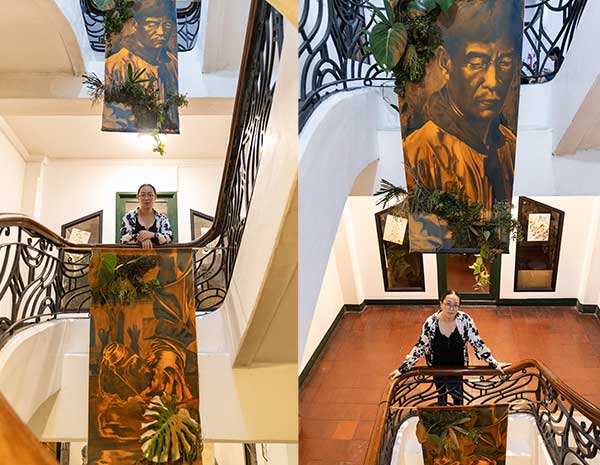
“Anino ng Kasagsagan”
Digital print on Duchess satin; Acrylic and oil pastel on canvas;
31 x 67 inches print on Duchess satin
2024
Kookoo Ramos-Cruda draws attention to the environmental and human cost of mining in Palawan through her artworks. Her canvas references images from a Pulitzer Center report, including one of Narlito Silnay, standing by the confluence of two polluted water sources, and another of a journalist collecting a water sample from the Tuba River.
Taking her work beyond the canvas, Ramos-Cruda transfers her paintings onto fabric, hanging them along the staircase of the First United Building. As viewers move through the space, the act of ascending and descending encourages a deeper reflection on the layered impacts of mining on land, water, and the lives connected to them.
As both a mother and an artist, Ramos-Cruda brings a personal urgency to addressing environmental degradation, driven by her concern for the future of her children and generations to come. Her work calls attention to the importance of listening to those most affected by environmental damage, highlighting the need to challenge systems that prioritize industrial profits over the well-being of nature and people. Through her art, she asks: how can we hold systems accountable and create fair solutions to heal what has been damaged, ensuring a better world for future generations?
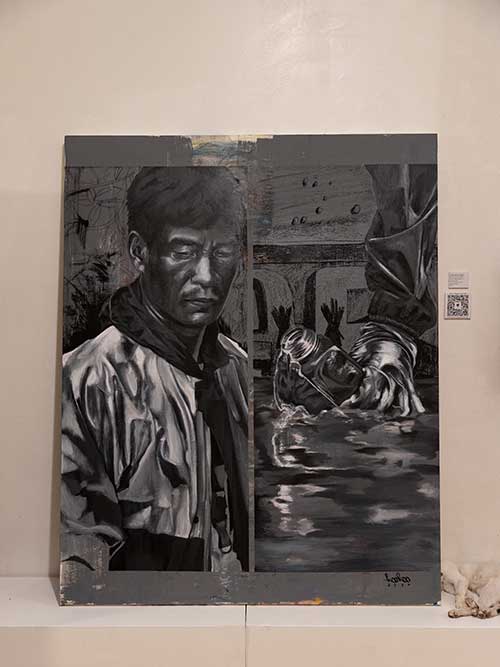
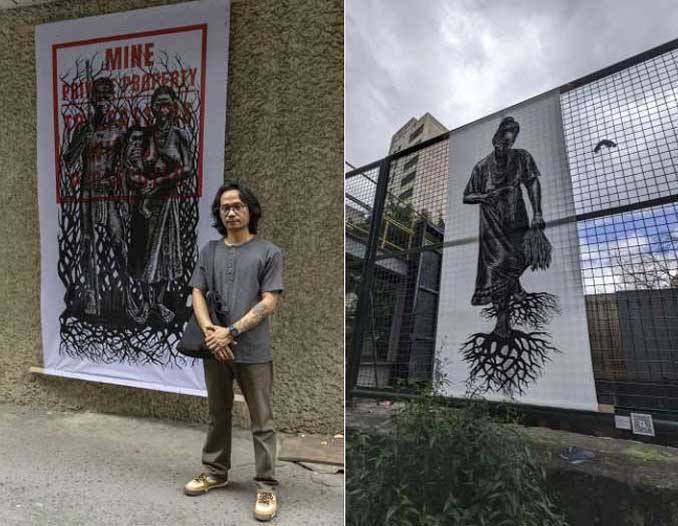
“Taruk”
Woodcut on polyethylene plastic,
43 x 108 inches
30 x 88 inches (relief)
2024
“Rooted”
woodcut on silk cloth Woodcut on vinyl,
woodcut on polyethylene plastic, woodcut on cloth
60 x 108 inches
48 x 95 inches (relief)
2024
Resty Flores highlights the struggles of Indigenous peoples and local communities against environmental and cultural displacement in his works. Drawing from firsthand experiences with Lumad and Aeta communities, he reflects on shared narratives of land loss, environmental degradation, and the erosion of cultural practices caused by exploitative policies and corporate interests.
The Mining Act of 1995, which facilitates large-scale mining on ancestral lands, serves as a backdrop to Flores’s exploration of the connections between land, culture, and identity. He portrays Indigenous peoples as primary stewards of nature, emphasizing their deep relationship with their ancestral domains and the threats posed by deforestation and resource extraction.
Flores created “Rooted” and “Taruk” using relief woodblocks, transferring the images onto materials like vinyl, plastic, and silk cloth. The works depict Indigenous figures and barren landscapes—visual metaphors for uprooted lives and ecosystems. In reflecting on these issues, Flores invites us to consider how we can confront the exploitation of land and people, and what responsibility we bear in this ongoing struggle.


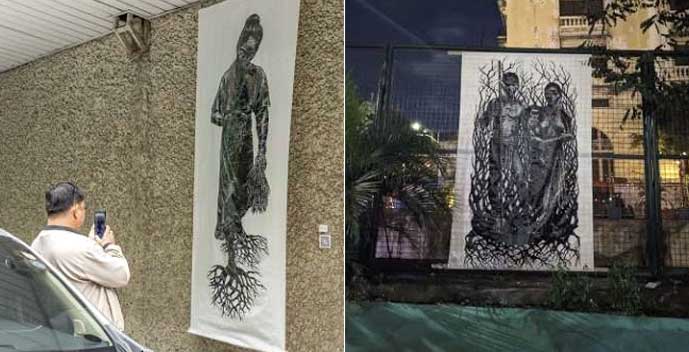
On the right is “Taruk” (printed on polyethylene plastic), installed along Banquero Street.



“Unsafe Levels of Hexavalent Chromium Found in Rio Tuba Waterways.”
Veejay Villafranca has a combined work experience of over 20 years, 4 of which as a staff photojournalist for a news magazine and over 15 years as a documentary photographer focused on issues of peace-building, environmental issues, technology, women and children’s health, amongst others. His keen dedication for visual reporting garnered the trust of the world’s leading news outlets such as The New York Times, The Guardian, Le Monde, Politico, LA Times, Washington Post, Time magazine, Newsweek. He has also been the Philippine correspondent for Getty Images Global Assignments and Bloomberg News covering the Asian region.
🌐 http://www.veejayvillafranca.com
Having graduated AB Communication in 2016 from Ateneo de Manila, Pao Vergara now covers art, culture, and politics in the Philippines and Southeast Asia and produces for film, advertising, TV, and social media.
🌐 https://www.clippings.me/users/peaveyvergara
Lk Rigor’s practice orbits the spheres of photography and archives in the form of writing, researching, and curating. She recently participated as a Southeast Asian fellow in the 2024 Professional Exchange Program organized by Taiwan Art Space Alliance and Taiwan-Asia Exchange Foundation. She is currently one of the curators of 98B COLLABoratory. She curated her first exhibit at the KalawLedesma Foundation, Inc. where she also works as a coordinator.
98B COLLABoratory is an independent, artist-run space in Escolta, Manila. They serve as a platform for critical discourse, experimentation, and the presentation of contemporary art in the Philippines. As a multidisciplinary art laboratory, they foster convergence among artists, designers, curators, writers, musicians, filmmakers, activists, educators, researchers, cultural workers, performers, architects, and students. Their goal is to engage our immediate networks and offer accessible art experiences that reach a diverse audience and contribute actively to the contemporary art scene through innovative projects.
Participating Artists
Eunice Sanchez’s art practice focuses on exploring preservation and perception through photography and alternative photographic processes. Her work often intersects with textiles, installation, and video; turning her art as means for memory-keeping and storytelling. Sanchez has exhibited her work in the Philippines, Cambodia, Singapore, and the UAE. She has participated in artist residencies such as the ASEAN Artists Residency Programme (2022) and the Rimbun Dahan Southeast Asian Arts Residency (2023).
🌐 https://www.instagram.com/eun.sanchez
Kookoo Ramos-Cruda began her creative journey with Pilipinas Street Plan in 2009, immersing herself in street art and finding her voice as a mural artist. From transforming public spaces to creating large-scale murals, she has developed a career around expressing narratives through visuals she enjoys creating the most—the human form and organic elements—seamlessly integrating creative inspirations, stories, interpretations, and techniques that best resonate with her work. Now a full-time mom, Kookoo approaches both motherhood and art with the same dedication and intention. Her role as a mother has deepened her perspective, adding new layers to her work while she navigates the demands of family and creativity. For Kookoo, life and art continue to evolve together, each enriching the other. 🌐 https://www.instagram.com/kookoo.ramos
Resty Flores (b. 1990) Resty is an art teacher, visual artist and cultural worker based in Quezon City. He is currently a member of PPSB (Prints Para sa Bayan) and SIKAD (Sining Kadamay). As a cultural worker, he lived among urban poor communities, farmers and national minorities to promote their aspirations for social change and total freedom. His works of art reflect the condition of the basic masses, and he presents it in various forms and mediums, such as mural, painting, printmaking, drawing and sculpture. As well as traditional mediums, Resty continues to explore new forms of art creation, such as printmaking. Currently, he uses the technique of relief printing using wood and rubber to depict the current state of the people. 🌐 https://www.instagram.com/res.cruz.flores

